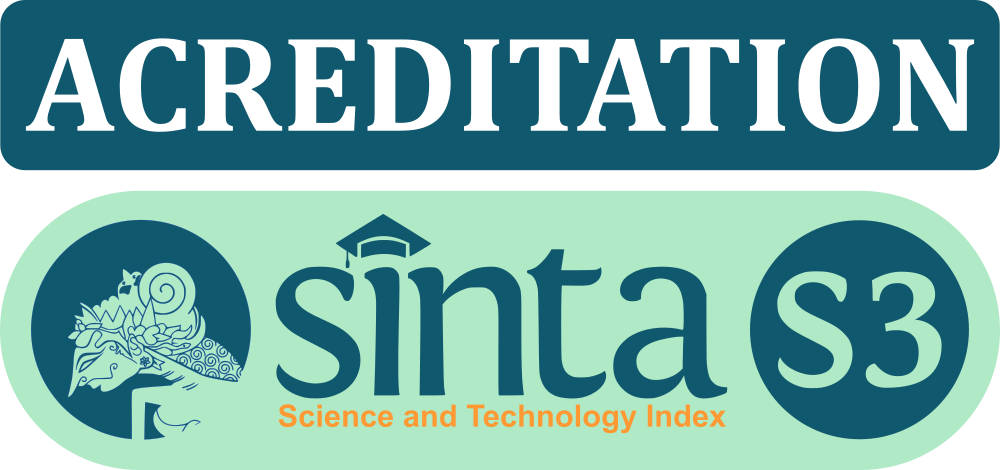DEVELOPMENT OF HVAC SYSTEM FOR MBSL-2 TFRIC BPPT
For the Comfort and Safety of Testing Personnel and the Safety for the Analysis Process and for the Environment from Exposure to SARS-CoV-2 Virus Contamination
DOI:
https://doi.org/10.29122/mipi.v15i1.4751Keywords:
PCR Test, HVAC, COVID-19, MBSL-2, BSL-2Abstract
Tracing, tracking and testing are keys in fighting COVID-19 pandemic. At the start of the pandemic in Indonesia, the capacity to test with RT-PCR methods as the golden standard was still quite low. BPPT, through TFRIC-19, developed MBSL-2 to increase the capacity of Covid-19 PCR Test. This Mobile Bio-Safety Level-2 (MBSL-2) is equipped with HVAC system which has the main function of providing comfort and safety for testing personnel as well as safety for the testing process. This MBSL-2 also provides safety for the environment in which MBSL-2 is placed from contamination of the SARS-CoV-2 virus which may be released during the PCR analysis process. There are several variants of the Heating, Ventilating and Air Conditioning (HVAC) MBSL-2 that have been built and operated. The requirement and the design result for MBSL-2 has been discussed in this paper. This HVAC system has to be able to cover cooling load of 2459 W. This MBSL-2 HVAC system has been designed to complement the RT-PCR testing facility that is safe for the personnel, environment and testing result from contamination. This MBSL-2 has been proved to be safe in the operation during this pandemic.
References
D. Wang, B. Hu, C. Hu, et al. “Clinical characteristics of 138 hospitalized patients with 2019 Novel Coronavirus–infected pneumonia in Wuhan, China”, JAMA, 2020, pp. 1061-1069. DOI:10.1001/jama.2020.1585.
R. Hidayat, N. Aini, A.F.N. Ilmi, F. Azzahroh, and A. Giantini, “Test, trace, and treatment strategy to control COVID-19 infection among hospital staff in a COVID-19 referral hospital in Indonesia”, Acta medica Indonesiana-the Indonesian Journal of Internal Medicine, Vol. 52, 2020, pp.206-213.
WHO, “WHO Coronavirus Disease (COVID-19) dashboard”, 2020, Available from: https://covid19.who.int/
Scottish Government, “Covid-19 – Test, trace, isolate, support: A public health approach to maintaining low levels of community transmission of COVID-19 in Scotland”, 2020.
A. J. Kucharski, P. Klepac, A.J.K. Conlan, et al., “Effectiveness of isolation, testing, contact tracing, and physical distancing on reducing transmission of SARS-CoV-2 in different settings: a mathematical modelling study”, Lancet Infectious Disease, 2020.
National Institute of Health (NIH), “Technical resources-design requirements manual”, Office of Research Facilities, 2020.
Stanford University, “General: ventilation consideration”, cited: March 2021, Available from:https://ehs.stanford.edu/manual/laboratory-standard-design-guidelines/general-ventilation-considerations.
J. DeLaurentis, K. Biopharm, “Designing HVAC systems for biosafety level requirements”, cited: March 2021, Available from:https://www.pharmaceuticalonline.com/doc/designing-hvac-systems-for-biosafety-level-re-0001.
ASHRAE, I. B. D. McIntosh, C. B. Dorgan, and C. E. Dorgan, “Ashrae laboratory design guide – Planning and operation of laboratory HVAC systems”, American society of heating, refrigerating and air conditioning engineers (ASHRAE), 2002.
US Food and Drug Administration, “Ora Lab Manual Volume II”, Available from:https://www.fda.gov/science-research/field-science-and-laboratories/field-science-laboratory-manual.
Siemens Industry, “Laboratory ventilation codes and standards”, 2013. Available from:https://www.downloads.siemens.com/download-center/Download.aspx?pos=download&fct=getasset&id1=A6V10324363
ANSI, “Laboratory ventilation (ANSI / AIHA Z9.5 –2012)”, The American society of safety engineers (ASSE), 2012.
Litbang PU, “Tata cara perancangan sistem ventilasi dan pengkondisian udara pada bangunan gedung”, Standard Nasional Indonesia (SNI), 2001.
Downloads
Published
How to Cite
Issue
Section
License

This work is licensed under a Creative Commons Attribution-ShareAlike 4.0 International License.
Open Access Policy
MIPI provides immediate open access to its content on the principle that making research freely available to the public supports a greater global exchange of knowledge.
MIPI by BRIN is licensed under a Creative Commons Attribution-NonCommercial-ShareAlike 4.0 International License. Permissions beyond the scope of this license may be available at http://ejurnal.bppt.go.id/index.php/MIPI


















